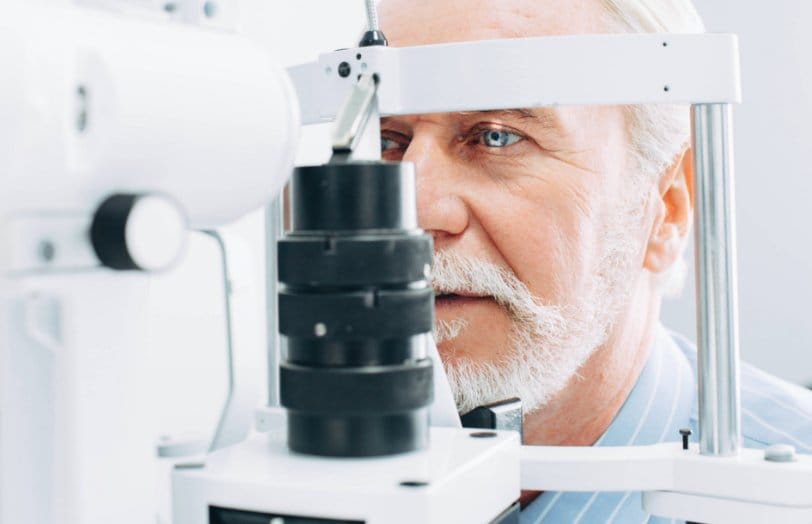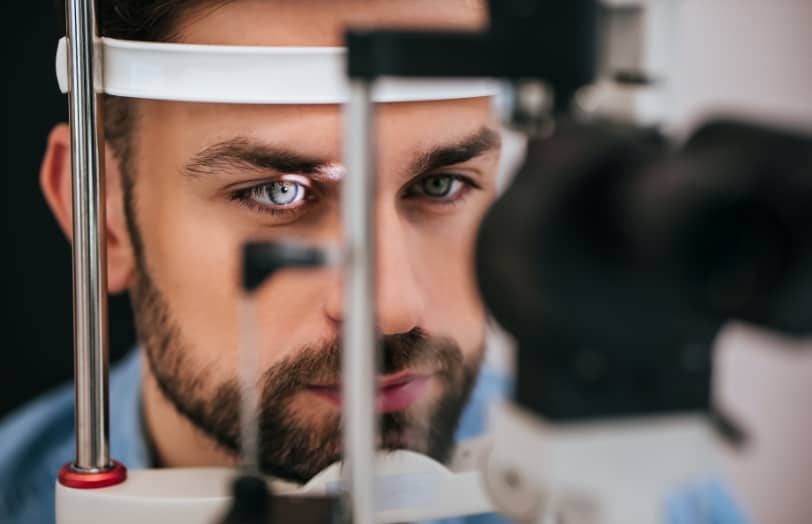Oculoplastics
Ageing of the skin and soft tissue is a natural and inevitable part of life. For many people, changes in the eyes are one of the first signs of getting older; this skin is very fine, making any changes more visible. You might notice the appearance of fine lines or wrinkles, or a loss of elasticity and firmness.
Sometimes these changes affect not just how you look, but how you see as well. If your upper eyelids are starting to feel heavier, cover part of your eye, or are beginning to affect your confidence, you may be experiencing a condition called ptosis.
In this article, we’ll explore what this condition is, what causes ptosis, and how to get rid of droopy eyelids. We’ll also share what you can expect from your patient journey with Sapphire Eye Care and why our combination of compassionate care and a wealth of expertise could be the right path for you.
We deeply understand that even subtle changes in your appearance or vision can have a significant impact on your daily life. Our experienced surgeons can help to correct ptosis with surgical treatment, restoring not only the function of your eye, but your confidence too.
What is Ptosis?
Ptosis is the name for the drooping of the upper eyelid, where it hangs lower than normal. Derived from the Greek language and meaning ‘downward displacement’, this condition can affect one or both eyes. It occurs when there is a stretch, detachment or weakness of the levator muscle, or its tendon, which is responsible for lifting the eyelid.
Ptosis can range in severity, from a mild sag to a more serious droop. While mild cases of ptosis caused by the natural changes of ageing can be purely cosmetic, sometimes it’s a condition that will need medical attention, and sometimes it can interfere with your visual field or quality of vision.
How is Ptosis Different from Sagging Eyelids?
It’s quite common to experience loose or sagging skin around the eyes, known as dermatochalasis, as we get older. This is usually caused by a loss of skin elasticity and weakening of the eyelid connective tissues, which happen naturally over time.
Dermatochalasis differs from ptosis as it concerns the skin, rather than the muscles lifting the eyelid. At Sapphire Eye Care, our experienced team can accurately diagnose the difference and recommend the most effective course of action for you and your needs.

What Causes Ptosis?
There are several possible causes of ptosis. These include:
- Age-related changes: This is the most common cause in adults, as, over time, the levator muscle can stretch or weaken.
- Congenital ptosis: Usually noticeable in early childhood, the upper eyelids will appear heavy or droopy. This appearance can worsen if the child is tired or unwell.
- Neurological disorders: Sometimes the nerves that supply the levator muscle can be affected, which can result in the drooping of the eyelid and sometimes dilation of the pupil or double vision.
- Muscle disorders: Sometimes ptosis is caused by rare muscle conditions, which can result in weakened eyelid muscles.
Previous damage or trauma: Damage or trauma to the eyelid can also affect the muscle that lifts the lid, although this is far less common. - Contact lens use: Alternatively, typically in younger patients, ptosis can be caused by long-term contact lens wear.
Whatever the cause of your condition, our team is here to help you understand your condition and plan the best way forward.
What are the Symptoms of Ptosis?
While many patients are initially concerned about how their eyelids look, ptosis can also bring functional challenges:
Vision-Related Symptoms:
- Headaches/brow ache
- Obstructed or narrowed field of vision, including reduced superior peripheral vision
- Visible drooping of the upper eyelid, especially if you’re tired
Emotional and Social Impact:
- A tired or more ‘aged’ appearance, even when well-rested
- Reduced self-confidence in photos or social situations
How to Get Rid of Droopy Eyelids: A Lasting Solution
We know that your appearance and your vision are closely linked, and that both play a role in your quality of life. So, if ptosis is affecting your vision or confidence, you don’t have to suffer in silence. There is a safe and effective solution available to you:
Ptosis Repair Surgery
Surgical correction is one of the most effective, long-term solutions for ptosis. During the treatment, our oculoplastic surgeons will tighten or reattach the levator muscle, enabling the eyelid to sit in a more natural position and function better than before.
This procedure is carried out under local anaesthetic as a day case, and your recovery will usually be pretty straightforward. Although the upper lid can remain swollen for a few weeks, the surgery will leave minimal scarring. Everyone’s healing journey is unique, but your final results will be visible after around two months post-surgery.
With Sapphire Eye Care, you’ll receive detailed aftercare instructions after your surgery to make sure you’re healing as expected. We’ll check in with you after one to two weeks to review your progress and remove any sutures. Then, we’ll see you for a final assessment after two to three months. We’ll be by your side throughout the process, so don’t hesitate to contact us if you have any questions.
What to Expect from Your Patient Journey
From your very first consultation, we’ll take the time to understand not just your symptoms, but your lifestyle, vision goals, and any questions or concerns you may have.
We know that deciding to undergo eyelid surgery is a big decision. However, with our personalised approach, we’ll make sure you never feel alone in the process.
Your journey will typically include:
- A full assessment with an ophthalmic specialist, who will enquire about your symptoms, medical history and may perform some visual tests, including, biometry (taking measurements of the eye) and tomography (a detailed imaging scan).
- A meeting with one of our specialised consultants, accompanied by a thorough examination of your eyes and discussing your options for treatment.
- We will then contact you about the next steps. This will include a bespoke treatment plan, built around your needs.
- We also provide supportive, expert care throughout your recovery period.
Our dedicated team will guide you at every stage, with a focus on safety, comfort and results that enhance your confidence.
You’re in Safe Hands with Sapphire Eye Care
Whether you’re experiencing droopy eyelids for the first time or have been living with the condition for a while, it’s never too late to explore your options.
At Sapphire Eye Care, we combine clinical expertise with a compassionate, patient-first approach. We’re here to help you feel confident in your care, treatment choices and your outcome, ensuring you are comfortable and supported throughout the process.
Book Your Consultation Today
Begin your journey towards clearer vision and restored confidence today.
If you’re concerned about your drooping eyelids or want to learn more about the treatment for ptosis, we’re here to help. Get in touch with our friendly and experienced team now to schedule your initial consultation at the clinic of your choice. Let’s find the right treatment path for you, together.

More blog articles from this category
Cataracts
Supporting You After Surgery: What to Expect from Sapphire’s Aftercare
Published 18.08.2025
Discover essential tips for a smooth recovery after eye surgery.

Cataracts
Preparing for Cataract Surgery: What to Expect
Published 21.07.2025
Discover how long cataract surgery takes, what to expect during

Cataracts
Activities After Cataract Surgery
Published 14.07.2025
Discover essential tips for effective care and recovery after cataract









